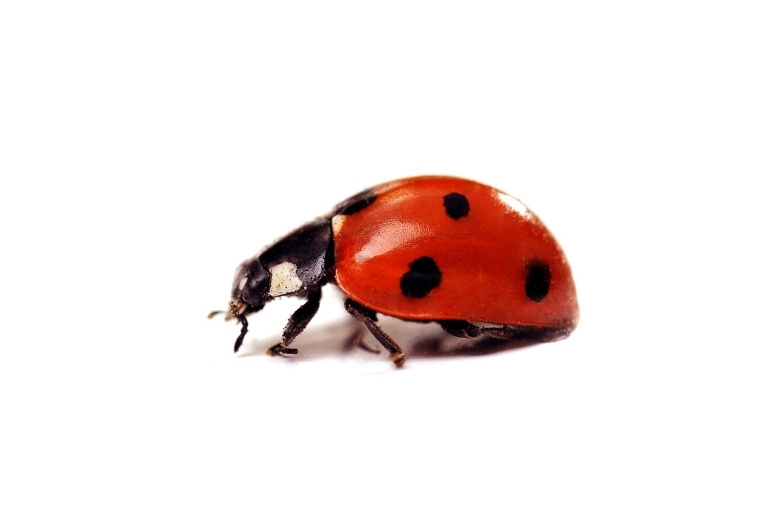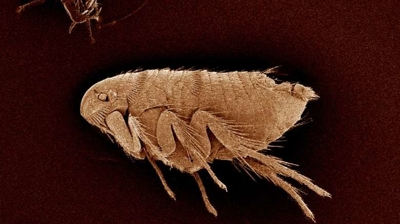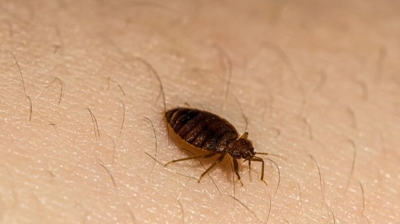
Ladybug Control Services

Ladybugs
Ladybugs are generally considered beneficial insects due to their role in controlling pest populations in gardens and agricultural fields. However, in some situations, they can be considered problematic or potentially even dangerous. Here are some ways in which ladybugs might be perceived as dangerous:
- House Infestations: During the winter months, ladybugs often seek shelter inside homes, where they can become a nuisance. Large infestations can lead to structural damage or trigger allergies in some individuals, particularly in homes with ladybug allergies.
- Allergic Reactions: Some people may be allergic to ladybug secretions or their blood, which can result in skin rashes, itching, or even more severe allergic reactions. Although such allergies are rare, they can be dangerous for those who are sensitive.
- Human Health Risks: In rare cases, ladybugs may carry human pathogens, which can pose a minimal risk to human health, particularly if ladybugs come into contact with food or open wounds.
- Invasive Species: The introduction of non-native ladybug species, such as the Asian lady beetle can sometimes have negative consequences. These species may outcompete native ladybugs and disrupt local ecosystems.
- Crop Damage: While ladybugs are generally considered beneficial to agriculture, in some cases, they may feed on crops such as grapes, creating economic challenges for vineyard owners. Their feeding can cause damage to fruit, leading to crop losses.
Proper pest management and prevention strategies can help mitigate potential issues associated with ladybugs in specific situations.
Learn more: Are Ladybugs Harmful? || Do Ladybugs Bite? || Are Ladybugs Poisonous? || What Damage Can Ladybugs Do? || What Do Ladybugs Eat?
Types of Ladybugs
Ladybugs are a diverse group of beetles, with more than 5,000 different species known worldwide. While many species of ladybugs share similar characteristics such as their distinctive body shape and bright coloring, there is a significant amount of variation among different types of ladybugs. Here are some of the most common types of ladybugs:
- Asian Lady Beetle: Also known as the Harlequin ladybug, this species is native to Asia but has become established in many other parts of the world, including North America. The Asian lady beetle has a variable appearance, with some individuals featuring black spots on a red background, while others have a more orange or yellow hue.
- Convergent Ladybug: This species is easily identified by its red body and white spots on its wings, which converge towards its head. It is found throughout North America and is a common garden visitor.
- Seven-Spotted Ladybug: This is perhaps the most well-known species of ladybug, featuring a bright red body with seven black spots on its wings. This type of ladybug is native to Europe, but has since been introduced to other parts of the world, including North America.
- Two-Spotted Ladybug: This species is characterized by its red body and two black spots on its wings. It is found in many parts of the world, including North America, Europe, and Asia.
These are just a few examples of the many types of ladybugs that exist. Each species has its own unique characteristics, such as size, coloration, and preferred habitat. Despite their differences, ladybugs share many common traits, including their beneficial behavior as predators of plant-eating insects.
Ladybug Removal
Ladybugs, often seen as harmless or even beneficial insects, can actually become a serious problem under certain conditions, particularly when they enter homes in large numbers. The urgency to control or eliminate them usually arises from a combination of structural, health, and nuisance concerns:
- Infestation Potential: Certain species, like the Asian lady beetle (Harmonia axyridis), have a tendency to seek shelter indoors during the colder months. They congregate in attics, walls, and window crevices in large numbers. Even though individual ladybugs aren’t dangerous, large infestations can cause structural and maintenance challenges.
- Property Damage: Ladybugs release a yellowish fluid called hemolymph when threatened or crushed. This fluid can stain walls, ceilings, fabrics, furniture, and carpets. Over time, these stains can be difficult to clean and may leave a lingering odor, potentially affecting home aesthetics and resale value.
- Allergic Reactions and Health Concerns: While ladybugs are not venomous, they can trigger allergic reactions in some people. Their presence can aggravate respiratory conditions like asthma, especially if their droppings or shed exoskeletons accumulate. There are documented cases where repeated exposure has caused skin irritation or conjunctivitis.
- Nuisance Factor: Beyond their potential for damage and allergic reactions, ladybugs are simply disruptive when they enter living spaces in large numbers. They can crawl on furniture, kitchen counters, and even bite humans, leaving minor but irritating marks. Their tendency to release the aforementioned fluid when threatened also makes them particularly bothersome indoors.
- Rapid Reproduction Outdoors: While a few ladybugs in a garden are beneficial for controlling pests like aphids, invasive species like the Asian lady beetle can outcompete native species, disrupt local ecosystems, and reproduce in such numbers that the risk of indoor infestations grows exponentially.
- Difficulty in Eradication Once Established: If they are allowed to settle indoors, getting rid of them can be extremely challenging. Ladybugs can hide in walls, ceilings, and other small crevices, making mechanical removal or chemical treatment labor-intensive. Early intervention is crucial to prevent a persistent, widespread problem.
While ladybugs might be charming in small numbers outdoors, their behavior as an invasive, indoor-seeking species can make them a significant pest. Addressing the issue promptly prevents property damage, reduces health risks, and avoids the stress of dealing with a large-scale infestation later.
Learn more: How To Get Rid Of Ladybugs || Ladybug Traps
Ladybug Control
Hiring our professionals for ladybug control can make a significant difference in both effectiveness and safety. Here’s why our professional intervention is often the best choice:
- Accurate Identification: Ladybugs are generally harmless, but other beetles or insects that look similar can cause structural or health problems. Our professionals can correctly identify the species, which ensures the right treatment strategy. Misidentification could lead to ineffective treatments or unnecessary pesticide use.
- Effective and Targeted Treatment: Our professionals have access to specialized tools, sprays, and dusts that are more effective than consumer-grade products. We know where ladybugs hide—commonly in wall voids, attics, window frames, and other small crevices—and can apply treatments directly to these spots, which significantly improves results.
- Prevention and Exclusion Expertise: The most important part of ladybug control is preventing them from entering in the first place. Our professionals can seal entry points and gaps in doors, windows, and siding, advise on or apply preventive measures like screening vents or repairing damaged areas, and offer seasonal strategies to reduce indoor infestations before they start.
- Time and Convenience: Ladybug infestations, especially in large numbers, can be overwhelming. Our professional ladybug control services save you the time and effort of trying to locate every hiding spot and applying repeated treatments yourself.
- Safe Application: While ladybugs are not poisonous, the chemicals used to remove them from large infestations can be hazardous if misapplied. Our professionals are trained to apply treatments safely, protecting your family, pets, and the environment.
- Long-Term Results: DIY methods often only offer temporary relief. Our professionals not only remove the current infestation but also implement strategies to prevent recurrence. This ensures that ladybugs don’t come back season after season.
- Peace of Mind: Large ladybug infestations can damage interiors, stain surfaces, or create unpleasant odors when crushed. Hiring our professionals gives you reassurance that the infestation will be handled thoroughly and safely.
While ladybugs might seem harmless, and can even be beneficial when outdoors, indoor infestations can be disruptive and difficult to manage. Our professional services provide precise identification, targeted treatments, effective exclusion, and long-term prevention, making it the most reliable solution for homeowners.
Ladybug Exterminators
Hiring our local exterminators instead of a national chain for ladybug infestations comes with several practical and strategic advantages, especially given the unique behaviors of invasive ladybug species like the Asian lady beetle:
- Specialized Local Knowledge: Our local exterminators are intimately familiar with the regional insect populations, seasonal behaviors, and the microclimates of the area. We know when and where ladybugs are most likely to enter homes and can target treatments more effectively. National companies often rely on broad protocols that may not account for local environmental patterns, leading to less efficient results.
- Customized Treatment Plans: Our local professionals tailor interventions specifically to your home’s construction, insulation type, and landscaping. Ladybugs often enter through attics, vents, or small crevices; our local experts can identify these entry points accurately and implement exclusion methods alongside treatment. National companies may rely more on standardized chemical applications rather than a comprehensive, integrated approach.
- Faster Response and Availability: Being nearby allows our local exterminators to respond quickly, which is critical with ladybugs because infestations can grow rapidly, especially in the fall. Immediate inspection, assessment, and intervention can prevent thousands of ladybugs from entering a home. National companies often have slower response times due to centralized scheduling and broader service areas.
- Thorough Prevention Strategies: Long-term management is as important as immediate removal. Our local exterminators often provide ongoing monitoring, seasonal preventative treatments, and advice on structural modifications or sealing techniques that are specific to local conditions. National chains often focus primarily on reactive treatments rather than proactive prevention.
- Accountability and Reputation: Our local team relies heavily on word-of-mouth and community reputation. We are more invested in delivering high-quality, lasting results to maintain our local credibility. If an issue persists, our local team is easier to contact for follow-ups, while national chains may treat the problem as a closed ticket.
- Cost-Effectiveness: Our local exterminators have lower overhead and can offer competitive pricing without cutting corners. We also combine chemical, mechanical, and exclusion strategies more intelligently, reducing the need for repeated costly visits.
- Integrated Pest Management (IPM) Expertise: Our experienced local service professionals employ IPM techniques, which focus on long-term solutions that minimize chemical usage, reduce environmental impact, and prevent reinfestation. National companies often prioritize standardized pesticide treatments, which can be less effective against ladybugs that are adept at hiding and reproducing in inaccessible areas.
Our local exterminators provide highly targeted, adaptable, and accountable services that address the unique behavior of ladybugs in the area, ensuring not just removal but long-term prevention—something a national chain often cannot match.
What Do Ladybugs Look Like?
Ladybugs, also known as ladybirds in some regions, have a distinctive and easily recognizable appearance. They are typically small, round beetles with the following key physical characteristics:
- Size: Ladybugs are relatively small insects, with adults measuring around 0.1 to 0.4 inches (2.5 to 10 millimeters) in length.
- Shape: Their bodies are dome-shaped and typically oval or rounded, somewhat resembling a small button.
- Coloration: The most familiar ladybug species, such as the seven-spotted ladybug (Coccinella septempunctata), are red or orange with black spots. However, there are numerous species with varying color patterns. Some ladybugs are entirely black, while others may be yellow, brown, or even pink.
- Spot Patterns: Ladybugs are often recognized by the spots on their elytra (wing covers). The number and arrangement of spots can vary among species. For example, the common seven-spotted ladybug has seven distinct black spots on its red or orange elytra.
- Head and Antennae: Ladybugs have small heads relative to their body size. They typically have two short antennae on their heads.
- Legs: They have six legs, like all insects, and these legs are relatively short and adapted for walking.
- Wing Covers: Ladybugs have hardened forewings called elytra that protect their delicate hindwings, which are used for flight. The elytra usually have a smooth and shiny appearance.
- Mandibles: Ladybugs have mouthparts that are adapted for chewing. They use these mandibles to consume their primary prey, which consists of soft-bodied insects like aphids.
Ladybugs' appearance can vary slightly between different species, and some may have unique patterns or colors. However, the red or orange background color with black spots is the most iconic and recognizable ladybug appearance. These distinctive features help them stand out in the insect world and are often associated with good luck and gardening benefits due to their role in controlling pest populations.
Learn more: Ladybugs vs Asian Lady Beetles
Where Are Ladybugs Found?
Ladybugs can be found in various areas around the home, both indoors and outdoors, depending on the season and their life cycle stage. Here are common places to encounter ladybugs:
- Gardens and Plants: Ladybugs are often seen on plants, especially those infested with aphids and other soft-bodied insects. They are natural predators of these pests and are attracted to areas with an abundant food source.
- Windows and Walls: During the fall, ladybugs sometimes seek shelter indoors to overwinter. They may gather on windowsills, walls, or ceilings in search of warmth and protection. This behavior is more common in cooler climates.
- Vegetable Gardens: Ladybugs are beneficial for gardens, so you may find them in your vegetable garden if you have aphid problems.
- Grass and Lawns: Ladybugs can also be found in lawns, particularly in areas with a lot of plant growth.
- Trees: Some ladybug species prefer trees, where they can feed on tree-dwelling pests such as scale insects.
- Shrubs and Hedges: Ladybugs can often be seen on shrubs and hedges, especially if these plants have aphids or other insects.
- Crops: In agricultural areas, ladybugs are valuable for pest control and can often be found on crops like soybeans, cotton, and various fruits and vegetables.
- Outdoor Structures: Ladybugs may congregate on outdoor furniture, sheds, and other structures when seeking shelter or sunning themselves.
- Indoors: As mentioned earlier, ladybugs may enter homes, especially in the fall, to overwinter. They might be found in attics, basements, and other quiet and warm indoor spaces.
While ladybugs are generally beneficial and harmless, their presence indoors can sometimes be considered a nuisance. If you find them inside your home and prefer them to be outdoors, you can gently collect and release them outside. Be cautious when handling them, as some species of ladybugs can emit a yellowish fluid that can stain surfaces and have a strong odor.
Learn more: Are Ladybugs Invasive? || Why Are There So Many Ladybugs Around My Home? || Why Lady Bugs Around Your Home Can Be A Big Problem ||
Ladybug Life Cycle
The life cycle of ladybugs, like many other insects, goes through several stages of development, from egg to adult. Here is a comprehensive overview of the life cycle of ladybugs:
- Egg Stage: The life cycle begins when an adult female ladybug lays eggs, usually near a source of food, such as aphid colonies or other soft-bodied insects. Ladybug eggs are typically oval and are often yellow or orange in color. The eggs are attached to leaves, stems, or other plant parts by a short stalk.
- Larva Stage: Once the eggs hatch, they release small, elongated larvae. Ladybug larvae look quite different from adults. They are often black or dark gray with elongated bodies and distinct segments. Ladybug larvae are voracious predators, primarily feeding on aphids and other small insects. During this stage, the larvae go through several molts, shedding their exoskeletons as they grow.
- Pupa Stage: After the larval stage, ladybugs enter the pupal stage. The pupa is a transitional stage where the larva transforms into an adult ladybug. Ladybug pupae are usually immobile and attached to a leaf or stem. They are often enclosed in a protective casing.
- Adult Stage: The pupal stage eventually gives way to the adult stage when the fully developed ladybug emerges from the pupal case. Adult ladybugs have the familiar rounded shape and distinctive coloration. They are capable of flight and are active predators, primarily feeding on aphids and other soft-bodied insects. Adult ladybugs can live for several months, depending on factors such as food availability and environmental conditions.
- Reproduction: Adult ladybugs are sexually mature and capable of reproducing. They lay eggs to start the life cycle anew.
The specific duration of each stage in the ladybug life cycle can vary depending on factors like temperature, food availability, and the ladybug species. Ladybugs are known for their role as beneficial predators in gardens and agricultural fields because both their larval and adult stages feed on aphids and other plant pests. They help to control pest populations, making them valuable allies in natural pest management.
Learn more: Everything You Need To Know About Ladybug Larvae
Learn more: Lady Beetles 101: Understanding Their Life Cycle And Habits For Effective Control

Hear From Our Happy Customers
-
"Great Communication"
Tech was on time, communication was great, and he accommodated my needs.
- Alonzo W. -
"Fantastic & Patient"
Jarvis was fantastic and patient. He answered my questions with an in-depth explanation and addressed all of my areas of concern. Would love for him to be my assigned tech going forward. Well done!
- Yonnette M. -
"Professional & Considerate"
I’m pleased with Miche services. Jarvis came today. Professional and considerate. Thank you!
- Judy B. -
"Very Knowledgeable"
The tech that arrived was courteous, professional, and very knowledgeable. He was Great.
- Uerial I. -
"Wonderful Service"
Wonderful service. Jarvis is great. Took care of everything I needed. Thank you!
- Henry P. -
"Exceeds Expectations"
I can’t say enough positive things about this company... The tech that came out, Jarvis went above and beyond my expectations. Thank you guys, I will continue using your services.
- Jake M.



